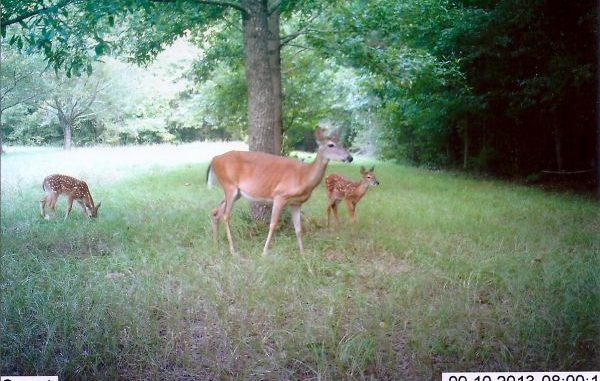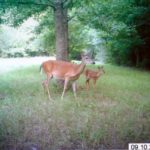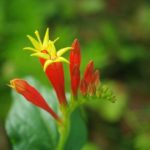
Signs of spring on the Louisiana landscape
Spring has sprung across the Louisiana landscape, and Old Man Winter is history.
According to the calendar spring, began on March 20 — but the North and Midwest were still having snow events.
Our spring turkey season began on March 22, and on March 24 the temperature in Clinton was 42 degrees. While increasing photo-period is the event that gets the toms in the breeding mode, no doubt temperature is also a factor — and despite the calendar that says spring is here, the toms must still have had their long johns on to keep the gonads warm because their activity level at the season opener was mighty slow.
No doubt this will be one of those years when the toms will still be gobbling in May.
I have always liked the later season; so have many in North Louisiana.
It will be interesting to see what the turkey harvest was like for 2014.
If the activity level was best during the late-season days, LDWF might be getting some calls about having a later season.
The hunters in those areas of the state with short seasons might not see much success if, indeed, the early season is like it was in East Feliciana. I am one who would like to see a season that opens the last week of March and ends on April 30.
Looking across the Louisiana landscape, we see that our flora does, indeed, say that spring has sprung. In college I got a good introduction to the flora of Louisiana when I took a plant taxonomy course taught by Dr. R. Dale Thomas.
Dr. Thomas is the author of numerous publications concerning the plants of the state and is a leading authority on the plants of Louisiana. This introduction inspired me to do graduate work under him.
The course is obviously offered during the spring semester, when plants are flowering, because one of the keys for identifying plants is by the flowers.
Lamium amplexicaule and Cerastium glomeratum were two of the first plants I became acquainted with. Both of these appear in the early spring and are common plants in everyone’s yard, and are generally referred to as weeds.
You may be familiar with their common names of henbit and mouse-eared chickweed. I know you have to be familiar with Senicio glabellus, commonly known as yellow-tops, the common yellow flowering plant in the spring ditches and in the moist turkey woods.
You might know that Spigelea marilandica is one of the most-colorful plants in our state’s woods, and if you do then you know it is commonly called Indian Pink.
I became acquainted with it in Bienville Parish. It is a common wildflower on the Jackson-Bienville Wildlife Management Area, and it grew around the old green headquarters cabin.
Many years ago, I collected the plant and put it in the flower bed in our yard in Baton Rouge. Every spring the stems with opposite leaves would emerge, and by late spring the plant had produced its showy flowers; the corolla tubes are bright red on the outside and yellow on the inside.
It definitely will get your attention. It is a favorite plant of nurseries that specialize in native flora, but you will pay a nice sum if you want it in your yard.
Another sign of spring is the fact that wood ducks are sitting on their eggs in nest boxes. The boxes on the lakes and ponds on property in Desoto Parish are full of eggs and hens sitting on the eggs.
I put a feeder in the larger lake, and it has definitely got the attention of the woodies. The drake wood duck has to be one of the most-colorful birds in the state during the early spring. I set up a trail camera by the feeder in the lake to capture the activity, and it took some great photos of the ducks.
While most hunters use trail cameras to document deer activity, these cameras are quite versatile and can be used to monitor all wildlife activity.
Last month I mentioned that deer hunters would be wise to get an early start on their spring plantings, especially forages that provide the deer with the necessary protein for growth and development. Since the turkey opener was pretty slow, I took my own advice and jumped on the tractor on that cold March day, and plowed and planted several sites with the Eagle brand soybean.
I saw four healthy deer on our small property that morning that, no doubt, had been foraging in the various clover patches scattered around the tract. It is hard to believe that this is the month that Area 2 does will begin dropping fawns.
The ground was just right for plowing. Along with the soybeans, I planted millet and sorghum, a good mix for both the whitetails and the turkeys.
If I had been smart and had bought the seed for the other sites, I would have finished the planting on this property.
I will again plant a site or two with a mix of sorghum, sunflowers and purple hull peas. I am saving a few sites that will be planted with American jointvetch, which is a warm-season forage that is high in protein value.
Jointvetch doesn’t really start growing until the soil warms up in July, but it will keep growing until first frost.
The clover and winter grass is growing great on our small property. I will let the wheat seed out, and provide seed for the turkeys and songbirds during the summer days.
If the soil moisture is good, I might put in a few late-summer strips of sorghum and sunflower. Some managers like to kill the winter grass and expose the clover to full sunlight, but I like the seed production for the birds. This basically is my planting scheme for 2014.
On the other Clinton site, about 10 miles away from our property, where the deer density is much greater, the deer have finally stopped gorging on the grass and clover patches as the native browse became available thanks to Mother Nature.
The patches are finally starting to grow, and should provide additional quality forage during the spring and summer months. The native browse is high in nutritional value when it first buds out.
I will plant last years’ summer strips with the Eagle brand soybeans and the sorghum mix. Jointvetch will also be planted on a few sites to provide the additional protein during the later months and, hopefully, provide hunting opportunities during the early season.
It would not surprise me if there was a real bumper crop of acorns this year. The early March freeze did not appear to hurt the mayhaw, crab apple, pear and black cherry trees that were flowering at the time. There was good weather for pollination of the oak trees that flowered in March.
Diversity in plant species is the key for sound habitat management, and the soft-mast trees should be given equal consideration as the hard mast trees. Likewise the native browse plants should be managed just like the forage plants in a food plot.
Regular timber cuts and thinnings will let the sunlight in and keep the native plants growing. There are several publications available about native forages that will give you information about how to identify them and address their wildlife value and importance: Checklist of the Woody and Herbaceous Deer Food Plants is one of them.
Scott Durham, the LDWF deer program biologist, also just finished a study concerning the nutritional value of native forages in Louisiana, and this information is available from LDWF.
Maybe next time when someone asks what the heck is Phytolacca americana you can quickly answer, “Well, that’s poke salad, a great deer browse — and the deer love the fruit!”




